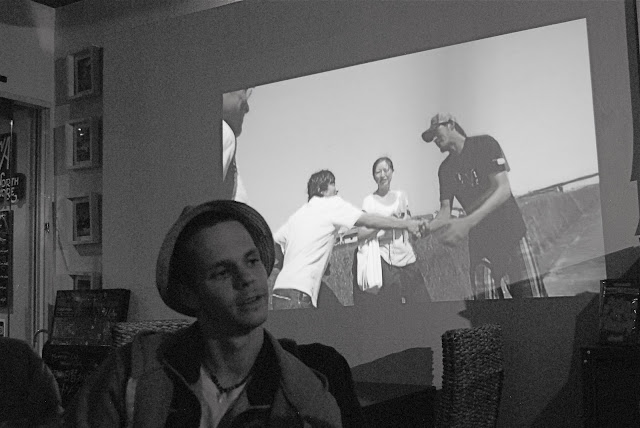I am no longer in Japan and unfortunately I will not be returning to finish my semester abroad. I left on March 17th from Kansai International Airport for spring break, with the intention of returning for classes on March 28th. The latter half will no longer happen.
Traveling was exhausting. There were camera men all over the airport. As you can see from the photos below, it was incredibly crowded. All sorts of people, including many Japanese citizens, were leaving. We left on short notice and arrived four and a half hours early but barely made the plane. The atmosphere at the airport was overwhelming.
With a 22-hour commute, I flew to my uncle's house in Maui, Hawaii and met family there. The contrast in atmosphere was poignant, even surreal. Everyone around me had Japan on the forefront of their minds, but in a way we avoided the big elephant in the room, because we were exhausted from watching the news 24-hours-a-day, because it had all been so sad, and mainly because my family and I didn't want to make the decision yet on whether or not I would return. At the same time, a feeling began to sink in that I probably wasn't returning.
120 exchange students have left Kansai Gaidai. Now that my decision is made, everyone is asking me why.
I am blessed, as one of the lucky ones living in Japan, untouched (at least physically) by the ongoing crises. I don't know anyone personally who has lost their life or home. Still, each time I turn on the news it makes me ill and the faces of victims have an uncanny familiarity. I wish my study abroad experience didn't have to end this way. Yet I am lucky. So many have lost
everything.
In crisis (even if it's happening miles away) there all sorts of side effects. Each individual must deal with their fears, anxieties, and emotions in their own way. Still I feel shame and sadness about leaving behind my Japanese friends, my international friends, my teachers, the country I've become attached to, and my study abroad. I am thankful to my friends who have been kind and understanding.
I'll have to make peace with the fact that I didn't get to say good bye to the people I care about. I will miss Japan everyday. But I am fine, unlike so many people whose lives are forever changed.
My final thoughts: whether you have stayed at KGU or whether you have gone (or whether you are neither of the above)...your decisions are your own, and I wish you peace in that which you have made.
Let's focus on what we can do.
Ideas:
* Donate to the Japanese Red Cross:
http://www.jrc.or.jp/english/relief/l4/Vcms4_00002070.html
* Buy "Songs for Japan" on iTunes.
* Text 90999 to "Redcross" and donate $10.
* Start your own fundraising project and find the appropriate charity.
































